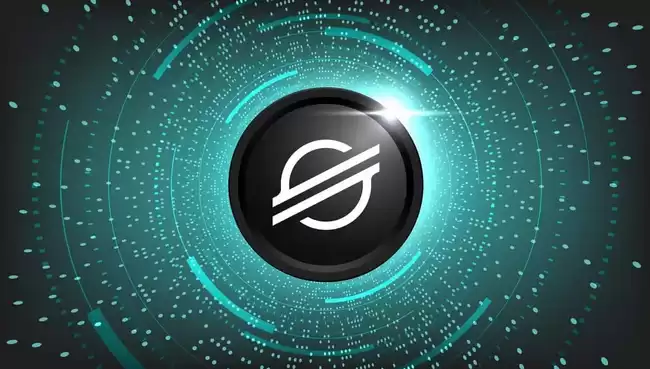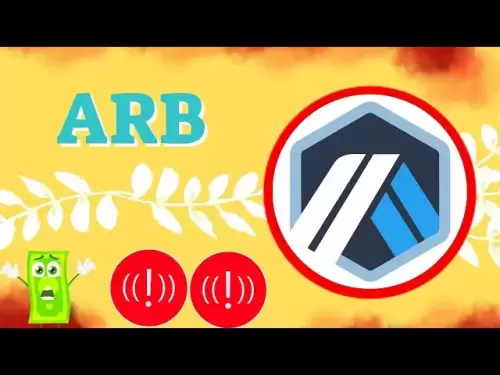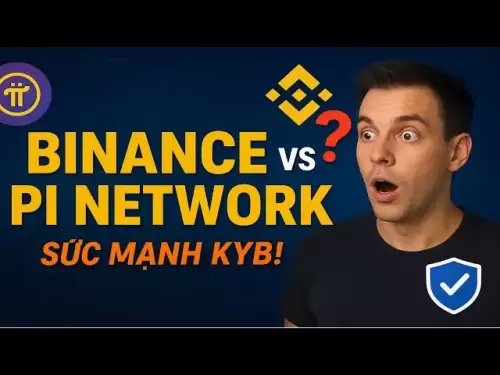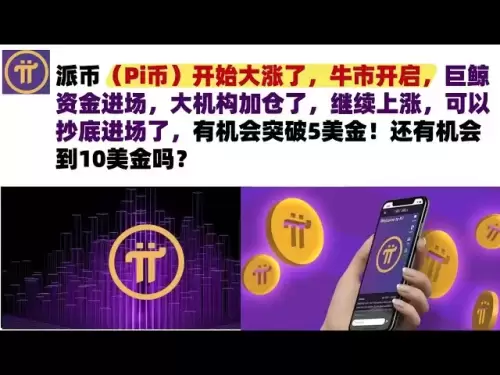-
 Bitcoin
Bitcoin $116700
0.48% -
 Ethereum
Ethereum $4213
6.27% -
 XRP
XRP $3.280
1.22% -
 Tether USDt
Tether USDt $1.000
0.02% -
 BNB
BNB $805.1
2.46% -
 Solana
Solana $180.2
2.65% -
 USDC
USDC $0.0000
0.02% -
 Dogecoin
Dogecoin $0.2412
8.50% -
 TRON
TRON $0.3356
-1.11% -
 Cardano
Cardano $0.8108
3.59% -
 Hyperliquid
Hyperliquid $43.89
8.53% -
 Chainlink
Chainlink $21.15
10.75% -
 Stellar
Stellar $0.4502
1.41% -
 Sui
Sui $3.935
4.69% -
 Bitcoin Cash
Bitcoin Cash $570.7
-1.75% -
 Hedera
Hedera $0.2636
3.28% -
 Avalanche
Avalanche $24.25
4.48% -
 Ethena USDe
Ethena USDe $1.001
0.03% -
 Litecoin
Litecoin $122.0
-0.08% -
 Toncoin
Toncoin $3.445
2.68% -
 UNUS SED LEO
UNUS SED LEO $8.979
-0.08% -
 Shiba Inu
Shiba Inu $0.00001379
6.73% -
 Uniswap
Uniswap $10.91
2.00% -
 Polkadot
Polkadot $4.106
5.39% -
 Dai
Dai $1.000
0.02% -
 Pepe
Pepe $0.00001227
9.07% -
 Bitget Token
Bitget Token $4.507
0.72% -
 Cronos
Cronos $0.1576
3.40% -
 Monero
Monero $272.0
-1.68% -
 Ethena
Ethena $0.7502
21.27%
What can XLM coins be used for? A comprehensive analysis of the application scenarios of XLM coins
XLM serves as the native cryptocurrency of the Stellar network, enabling a diverse array of applications, including payments, cross-border remittances, asset tokenization, DeFi operations, liquidity provision, micropayments, developer incentives, and network fees.
Oct 12, 2024 at 05:24 pm

What can XLM coins be used for?
XLM 2.0's Stellar Network is a decentralized network that connects people, institutions, and payment systems. It facilitates low-cost, universal payments and aims to make financial transactions more accessible and efficient worldwide. The Stellar network's native cryptocurrency, XLM, plays a crucial role in enabling these use cases. XLM has a wide range of applications, including:
1. Payment Transactions:
XLM is primarily used as a medium of exchange for payments across the Stellar network. Its low transaction fees and fast processing times make it ideal for sending and receiving money domestically and internationally. XLM can be used to pay for goods and services online or in-store, making it a convenient alternative to traditional fiat currencies.
2. Cross-Border Remittances:
XLM has gained significant traction in the remittance industry due to its ability to facilitate fast, cost-effective cross-border payments. By leveraging the Stellar network's decentralized infrastructure, XLM enables individuals and businesses to send and receive funds globally without incurring high fees or experiencing delays.
3. Tokenization of Assets:
The Stellar network allows for the tokenization of real-world assets, such as stocks, bonds, and real estate. XLM is used as a bridge currency to facilitate the creation and exchange of these tokenized assets, opening up possibilities for fractional ownership and increased liquidity in various asset classes.
4. Decentralized Finance (DeFi):
XLM plays a role in DeFi applications built on the Stellar network. It can be used as collateral for loans, as a unit of account for decentralized exchanges, and as a payment method for yield farming and other DeFi activities. XLM's fast transaction times and low fees make it a suitable choice for various DeFi use cases.
5. Liquidity Provision:
XLM is often used as a liquidity provider in decentralized exchanges on the Stellar network. By facilitating the exchange of other cryptocurrencies, XLM helps maintain market stability and ensures liquidity for various trading pairs.
6. Micropayments:
Due to its low transaction fees, XLM is suitable for micropayments. It enables businesses to charge small amounts for digital goods or services, such as in-app purchases, online subscriptions, or micro-tipping on social media. XLM's fast processing times make it ideal for seamless and high-volume micropayment transactions.
7. Developer Incentives:
The Stellar Development Foundation offers incentives to developers building on the Stellar network. Developers can earn XLM rewards by contributing to the ecosystem, creating applications, and promoting the network's adoption. These incentives encourage innovation and growth on the Stellar platform.
8. Network Fees:
XLM is used to pay for network fees on the Stellar network. These fees are minimal and cover the computational costs associated with processing transactions, ensuring the smooth functioning and security of the network.
Conclusion:
XLM is a versatile cryptocurrency with a wide range of applications on the Stellar network. Its primary use case is as a payment medium, but it also plays a vital role in cross-border remittances, tokenization, DeFi, liquidity provision, micropayments, developer incentives, and network fees. XLM's low transaction fees and fast processing times make it a suitable choice for various applications, contributing to the adoption and growth of the Stellar ecosystem.
Disclaimer:info@kdj.com
The information provided is not trading advice. kdj.com does not assume any responsibility for any investments made based on the information provided in this article. Cryptocurrencies are highly volatile and it is highly recommended that you invest with caution after thorough research!
If you believe that the content used on this website infringes your copyright, please contact us immediately (info@kdj.com) and we will delete it promptly.
- Trump, Crypto Vehicle, and WLFI Tokens: A New York Minute on the Latest Buzz
- 2025-08-10 00:30:12
- Wheat Penny Fortune: Unearthing Valuable Coins in Your Pocket Change
- 2025-08-10 00:35:19
- AI Coin Mania: Dubai Millionaires Eye 20x Gains!
- 2025-08-09 23:10:12
- ChatGPT's Hot Takes: Meme Coins to Buy Now for a Wild 2025!
- 2025-08-09 23:10:12
- Jurassic Park Vibes in Your Pocket: The Colourful Canadian Coin Featuring a Dinosaur Eye
- 2025-08-09 23:50:12
- Altcoins on the Radar: VeChain, Ethereum, and the Shifting Crypto Landscape
- 2025-08-09 23:50:12
Related knowledge

What is Ethereum’s Slashing mechanism and how to punish malicious behavior?
Feb 20,2025 at 03:08am
Key PointsOverview of slashingDifferent types of slashing in EthereumIncentives and consequences of slashingIdentifying and reporting slashed validato...

What is the verifier node of Ethereum and how to become a verifier?
Feb 19,2025 at 06:00pm
The Verifier Node of Ethereum: A Comprehensive GuideKey Points:What is a Verifier Node?How to Become a Verifier NodeResponsibilities and Rewards of a ...

What is Ethereum’s staking, and how to participate and earn money?
Feb 19,2025 at 04:37pm
Key Points:Understanding Ethereum's Staking MechanismSteps to Participate in StakingBenefits and Rewards of StakingSecurity and Risk ConsiderationsTec...

What is Ethereum’s DAO (Decentralized Autonomous Organization) and how does it work?
Feb 20,2025 at 03:12am
Key PointsDefinition and Structure of a DAOGovernance and Decision-Making in DAOsBenefits and Use Cases of DAOsChallenges and Limitations of DAOsWhat ...

What is Ethereum's multi-signature wallet and how to improve security?
Feb 20,2025 at 02:18pm
Key Points:Understanding the Concept of a Multi-Signature WalletBenefits and Drawbacks of Multisig WalletsRequirements for Setting Up a Multisig Walle...

What is Ethereum's oracle and how to provide data for smart contracts?
Feb 21,2025 at 01:30am
Key Points:Understanding the concept of oracles in EthereumExploring different types of oraclesDetailed guide on how to provide data for smart contrac...

What is Ethereum’s Slashing mechanism and how to punish malicious behavior?
Feb 20,2025 at 03:08am
Key PointsOverview of slashingDifferent types of slashing in EthereumIncentives and consequences of slashingIdentifying and reporting slashed validato...

What is the verifier node of Ethereum and how to become a verifier?
Feb 19,2025 at 06:00pm
The Verifier Node of Ethereum: A Comprehensive GuideKey Points:What is a Verifier Node?How to Become a Verifier NodeResponsibilities and Rewards of a ...

What is Ethereum’s staking, and how to participate and earn money?
Feb 19,2025 at 04:37pm
Key Points:Understanding Ethereum's Staking MechanismSteps to Participate in StakingBenefits and Rewards of StakingSecurity and Risk ConsiderationsTec...

What is Ethereum’s DAO (Decentralized Autonomous Organization) and how does it work?
Feb 20,2025 at 03:12am
Key PointsDefinition and Structure of a DAOGovernance and Decision-Making in DAOsBenefits and Use Cases of DAOsChallenges and Limitations of DAOsWhat ...

What is Ethereum's multi-signature wallet and how to improve security?
Feb 20,2025 at 02:18pm
Key Points:Understanding the Concept of a Multi-Signature WalletBenefits and Drawbacks of Multisig WalletsRequirements for Setting Up a Multisig Walle...

What is Ethereum's oracle and how to provide data for smart contracts?
Feb 21,2025 at 01:30am
Key Points:Understanding the concept of oracles in EthereumExploring different types of oraclesDetailed guide on how to provide data for smart contrac...
See all articles

























































































